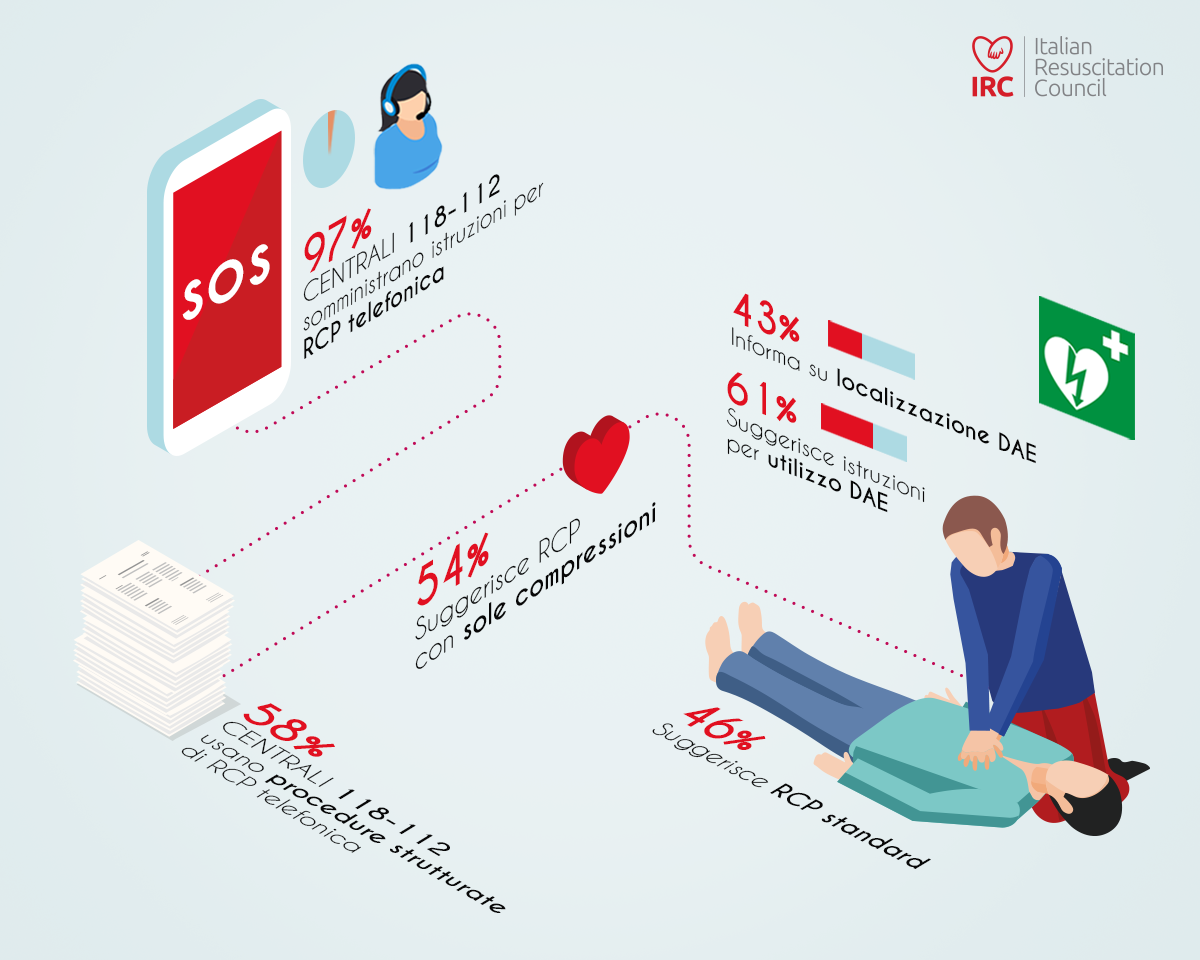
Telephone dispatcher-assisted cardiopulmonary resuscitation in Italy.
Early recognition of cardiac arrest is critical to enable rapid initiation of bystander cardiopulmonary resuscitation (CPR), while waiting for the arrival of professional rescuers.
Dispatcher personnel should enhance the capability to early identify a cardiac arrest upon the witness calls and to assist and instruct the bystander in the provision of CPR manoeuvres, through the so-called “telephone-assisted CPR (T-CPR)”. Indeed, T-CPR has been shown to significantly increase the rate of bystander CPR together with the outcome of cardiac arrest.
However, little was known about the T-CPR diffusion in Italy. Thus, Italian Resuscitation Council (IRC) conducted a nationwide survey in order to evaluate the current implementation of the dispatcher-assisted T-CPR throughout the Italian 112-Emergency Medical Systems (EMS). All the EMS in Italy registered on Ministry of Health Website were directly contacted and interviewed by telephone, between 15 Sept and 15 Oct 2016.
The survey questionnaire covered the following topics: the provision of instructions for T-CPR and of directives for chest compression-only (CCO) or CC plus ventilation; the presence of a standardized procedure; and guidance for AED localization. Finally, the year of activation of the dispatcher assistance for the bystander caller, was requested.
Seventy-nine out of the 79 Italian EMS answered to the questions, letting the survey to be a representative for the nation with a 100% response rate. The instructions for bystander T-CPR were routinely deployed by 97% of the EMS, although it was included as a standardized procedure only in 58% of the centers.
T-CPR assistance included CCO instructions in 54% of EMS and guidance for AED localization during the telephone call in 43%. In the instance of the presence of an AED, 61% of EMS guided bystanders through its use. The maximal implementation of the dispatched-assisted CPR in Italy occurred between 2006 and 2010.
This survey provides a realistic picture of the Italian EMS dispatch organization and strength of the first link of the chain of survival and community involvement in resuscitation manoeuvres (further details can be found at www.ircouncil.it). IRC is confident that the information provided by this survey may be useful for comparison with the T-CPR implementation in other countries.



